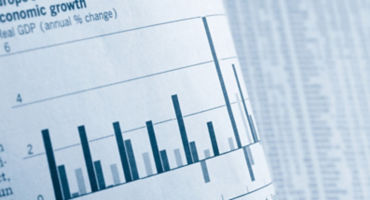That economic model has been rocked by a series of shocks and structural challenges:
- Chinese and global trade no longer represent the same growth opportunities given the structural trend towards deglobalisation;
- The Ukraine war has put an end to Germany’s access to a cheap and dependable source of energy supplied by Russia; and
- Germany’s car industry faces a structural threat from Chinese electric vehicle makers.
These shocks, however, are only accelerating a longer-term trend of declining competitiveness. For all its positives, the Germany’s export-led growth model discouraged investment. And even before COVID, the government was starting to unpick many of the country’s labour reforms. The Schröder government’s “Hartz IV” reforms gave way to “Bürgergeld”, raising unemployment benefits and pension payouts, as well as sharp rises in the national minimum wage.
Yet the current crisis is not being met with the same political resolve that we saw in the early 2000s. Political fragmentation and the rise of non-establishment parties is hampering the current coalition government’s willingness and ability to push through renewed supply reforms Instead, policy is increasingly looking inward, with attempts to boost domestic demand with structurally looser fiscal policy and an expanding labour share of GDP. The key question is how the private sector responds to this transition. Essentially, our research suggests two potential outcomes may play out in 2024 and beyond, each with starkly different market implications.
1. On the road to rebalancing
The benign and most likely outcome is that Germany evolves into a much more balanced economy, with a lower dependence on exports and a shift to fiscally supported domestic demand. That shift started before COVID as domestic demand became a more important driver of growth.
If Germany is engaged on this path, the make-up of its economy should converge to the average of Europe rather than being a source of deflation. Such a convergence would make the euro area more sustainable and reduce the risk of sovereign fragmentation. Germany would shift from being a source of supply-led disinflation to demand-led inflation. That would put more pressure on the European Central Bank to keep rates higher for longer.
It would also imply a much slower accumulation of savings as household savings rates and the trade surplus would fall. That has implications for global markets — Germany would stop being a major source of cheap capital for the rest of the world. Since the mid-2000s, German investors have increased their holdings of foreign assets by a massive €8 trillion, an acceleration led by building their holdings of global fixed income securities. Under this rebalancing scenario, that flow would dry up, which could have important implications for many fixed income markets. For instance, German investors have significantly increased their market share of US high-yield and investment-grade credit. A reversal in these flows would exacerbate the uptrend in risk premia and contribute to higher long-term rates.
2. Deflation and political instability
A more negative path is that the German transition is partial rather than whole, with today’s heightened uncertainty causing the private sector to double down on saving, which, in combination with weaker exports, could stifle growth and increase the risk of renewed deflation. From that perspective, the persistent weakness in consumer confidence is concerning, as is the recent German Constitutional Court ruling that limits the government’s attempts to circumvent the debt rules. The growing popularity of far-right (AfD) and far left (BSW) parties also increases the risk that Germany travels this path. It isn’t inconceivable that 2024’s regional elections could give these parties sufficient leverage to cause political paralysis at the national level. Combined with structurally weaker exports and a domestic sector that is reluctant to spend, this could create a dangerous cocktail of deflation and political instability for Germany and Europe, at a time when both require political stability.
To assess the likelihood of the different paths, we're continuing to monitor various developments, but the key ones to watch are:
- Consumer reaction — For instance, we’re closely monitoring near-term signals such as employment surveys and household surveys on saving intentions.
- A better understanding of the fiscal path forward —In the aftermath of the German Constitutional Court ruling, we’re focused on understanding the fiscal ramifications for Germany and the euro area and the extent to which the coalition government will be able to maintain fiscal flexibility in support of defence spending, the climate transition and rebalancing the economy.
- Political developments — Near-term signals to watch include polls to assess the fortunes of the far-right and far-left parties ahead of regional elections in 2024, but also the ability of the governing coalition to regain the political initiative and forge a consensus on key challenges. Longer term, we will also be keeping a close eye on emerging discussions regarding the removal of the constitutional budget brake, potentially after the next federal elections.













Japan equity: Reason to believe
Continue readingBy
Toshiki Izumi, CFA, CMA